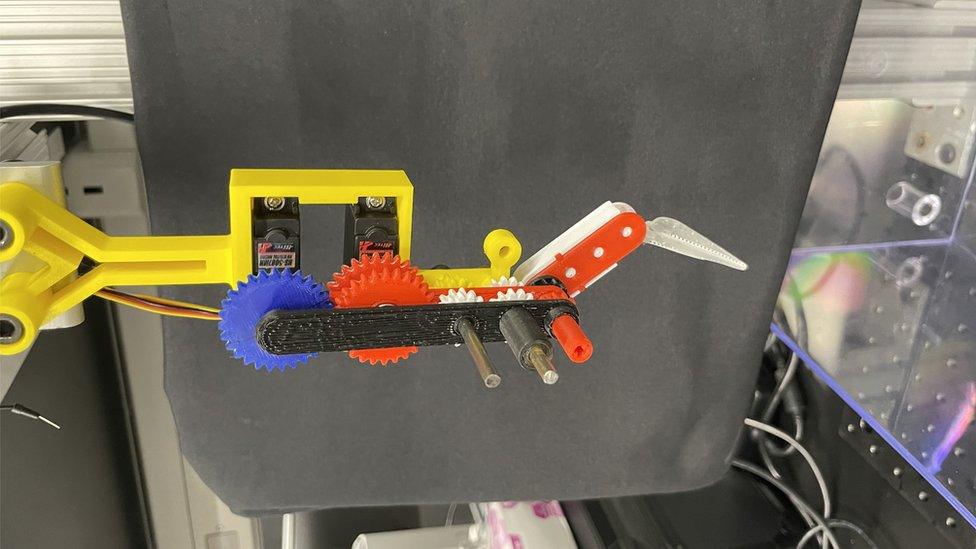RoboKrill: The tiny swimming robot inspired by krill
- Published
- comments

This tiny robotic leg could help scientists to study underwater creatures and explore hard to reach parts of the ocean!
Professor Monica Martinez Wilhelmus and her team of researchers at Brown University in the United States were inspired by the way that krill move in the ocean, and decided to try to recreate this in a robot.
Krill are tiny crustaceans - in the same class as crabs and lobsters - and can be found in all oceans on Earth.
They are a hugely important part of the food chain and many ocean creatures depend on them to survive.
Monica wanted to create a robot study krill better, to help improve our knowledge of them.
Why krill?

Despite being about the size of a paperclip, Krill are one of the most important creatures on Earth.
They form big swarms in the sea and are the main food source of hundreds of marine animals - including the world's biggest creature - the Blue Whale.
They also provide important nutrients, carbon and oxygen in the Antarctic.
However there is much about krill that scientists don't know because they are so small and difficult to study.
Sara Oliveira Pedro Dos Santos who worked on Monica's team said they chose the Euphausia superba krill for this reason: "We are also interested in this species because they are very good at manoeuvring underwater, accelerating, braking, and turning, and they can inspire future generations of robots to have high manoeuvrability and swim efficiently."
There are around 85 known species of krill.
When they feel threatened, krill can use an escape method called lobstering - where they flick their tail and move backwards through the water rapidly, at around 10 to 27 body lengths per second!
There are around 125 million tons to 6 billion tons of krill in the waters around Antarctica alone!
During certain times of year, krill come together in swarms so big that they can be seen from space!
Blue whales eat A LOT of krill. About 4 tons a day - That's about the same as a fully-grown hippopotamus!
How did they build RoboKrill?

To better understand how krill move, Monica and her team built a robotic leg called RoboKrill, using a 3D-printer.
They used high speed cameras to slow down a krill's movements to help them to learn how their robot should move.
RoboKrill moves in a similar way to a krill's swimmerets - the swimming legs they have on their bottoms.
Size was also a challenge for the researchers building the robot, as krill are so small: "We also wanted to create something more to scale, which proved to be very challenging due to difficulty in having very small hinges and controlling them, so our robot is 10 times the size of krill. " explained Sara Oliveira Pedro Dos Santos.
Currently RoboKrill can't swim on its own, but the researchers hope that one day it can be sent into the wild to swim with krill and help to study them, and even explore hard to reach areas of the ocean.
"We hope that through investigations using RoboKrill, we will be able to understand some general characteristics about their locomotion method that also apply to organisms other than krill. " said Sara Oliveira Pedro Dos Santos.
"Krill are very efficient swimmers in their environment and can perform all of these tasks that require high manoeuvrability, which is something we want to import into robotics. These high manoeuvrability robots could help us explore fragile environments, as well as shipwrecks and caves. "
- Published13 March 2014
- Published14 July 2020

- Published20 April 2021

